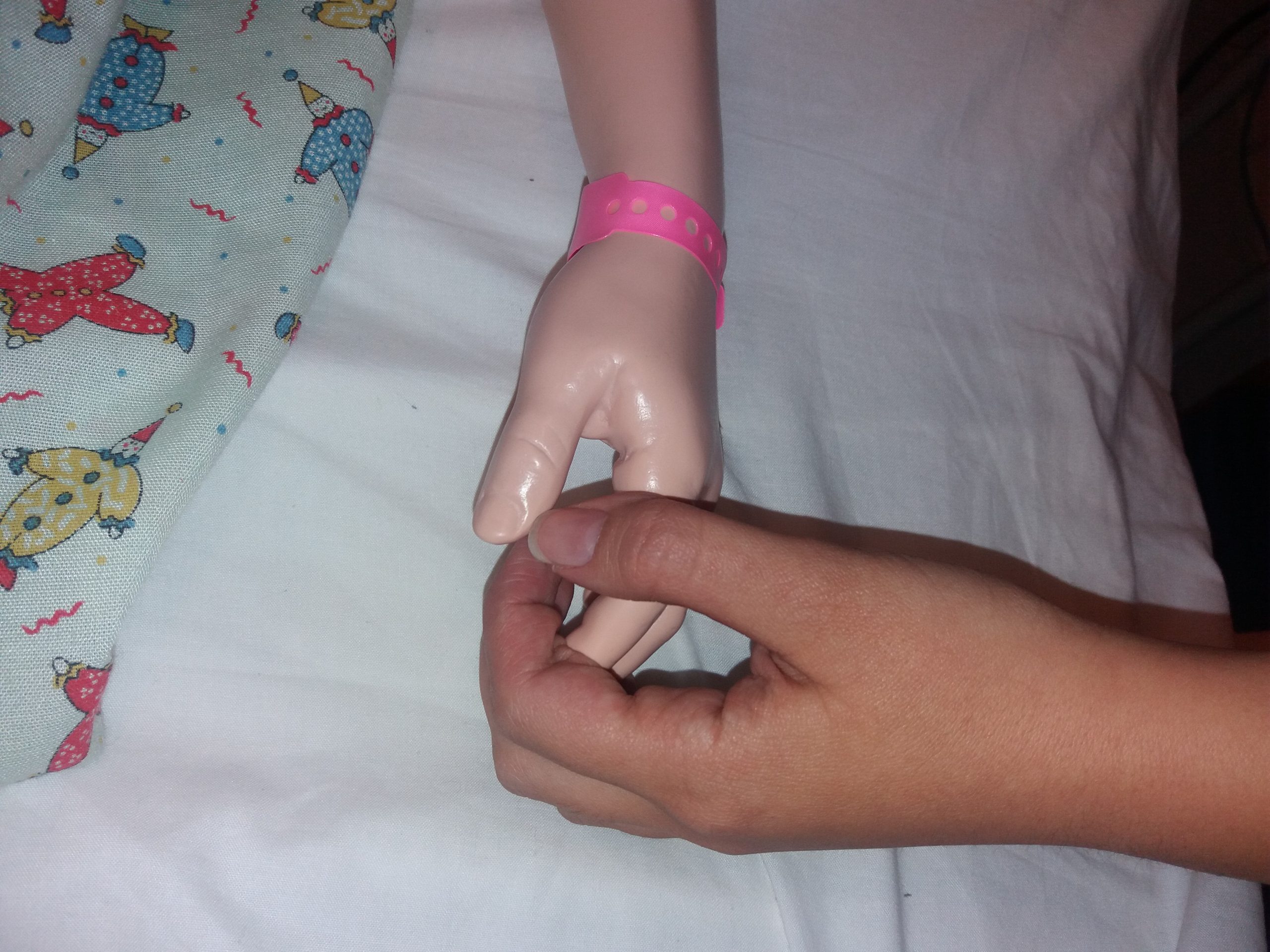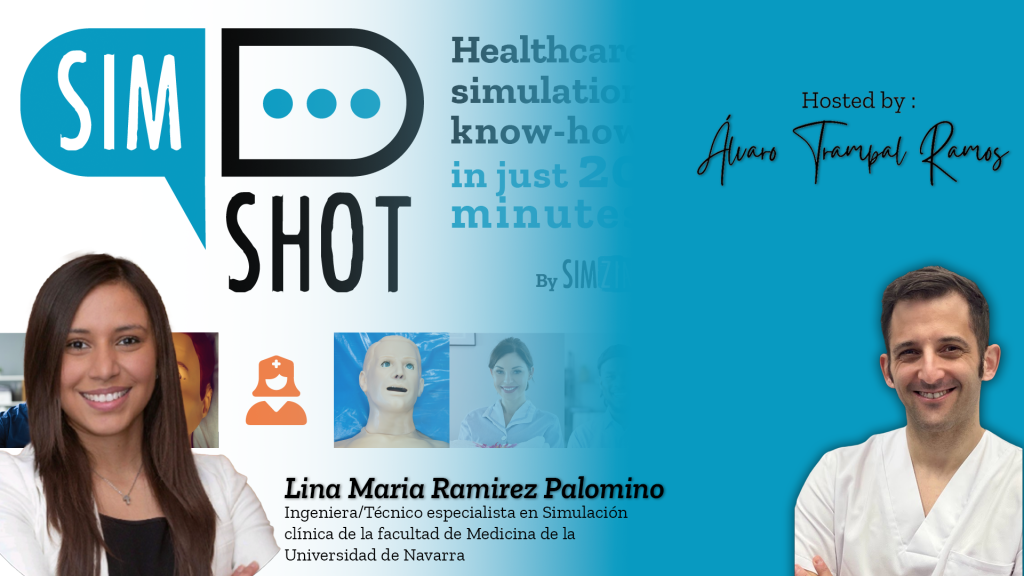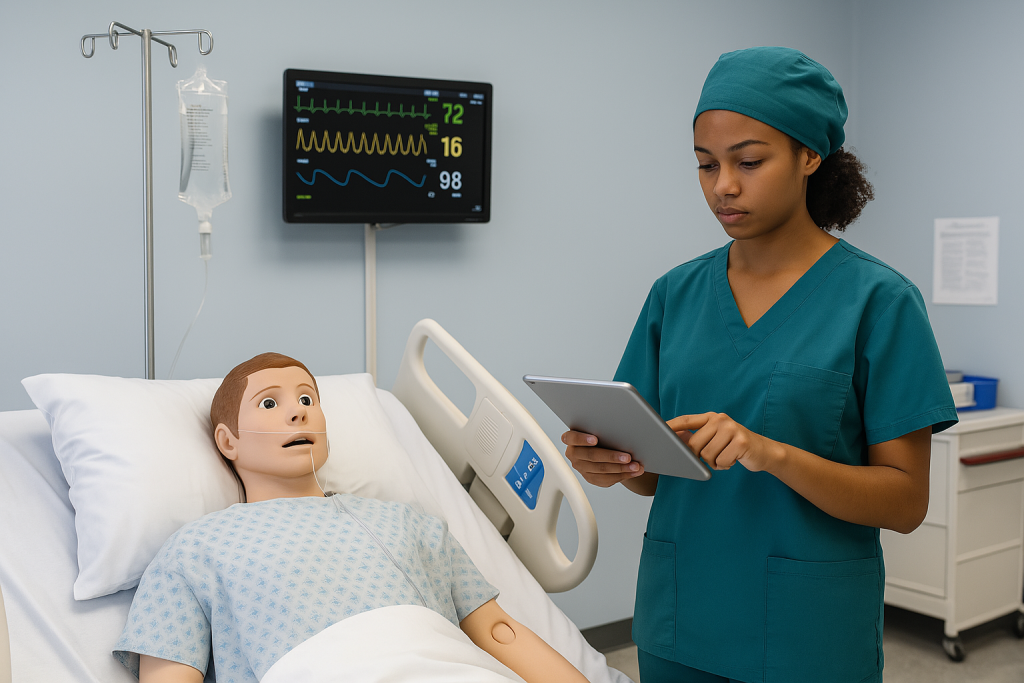More is not always better. This is the case for clinical simulation realism in medical education: the challenges of simulation fidelity and simulator training can significantly impact student learning. We explore the benefits and complications of increasing fidelity in clinical education settings.
In this communication, we will report some of the situations observed by the authors – in relation to the teaching exercise in simulation – that led us to raise the “problem of compensation” (Herrera et al., 2023), which corresponds to a phenomenon where the physical fidelity of the simulation is increased in an unfounded way in low fidelity training situations.
A concrete case
A teacher’s class was taking place. This class consisted of the practice of inserting a peripheral venous catheter with a group of “novice” students, approximately in the second year of a health career or program, which, due to its difficulty, had been divided into three classes separated by a week. The objective consisted, precisely, in inserting a peripheral venous catheter, being the first confrontation of these students with such a technique. All the supplies required for such a procedure, which is considered to be a “low fidelity” procedure, were available. When the teacher started the class, he performed a demonstrative exercise and requested more supplies from the operators of the simulation center, such as venoclysis, intravenous solutions, infusion pump, etc. Then, the students started the practical exercise, where the teacher frequently commented: “this arm is not the same as the real thing”, “in patients the skin is not so hard”, “the procedure is not the same in a patient because the patient moves”, “the real learning will come when you perform the procedure in a real patient”.
In the second class, we were able to observe even more closely the performance of the students and we noticed that they had not overcome aspects such as: holding the catheter well, performing skin antisepsis, performing a correct angle of insertion, etcetera. However, the teacher was requesting that the arm was not “simply” on the table, but that the arm was attached to a full body simulator, on a clinical bed and in a room that had “a little more atmosphere”, because he said that the student should greet the patient and introduce himself, identify his name, observe the changes in the multiparameter monitor, observe the changes in vital signs, etcetera.
We thought there was a problem here because the student had not gone beyond the basic steps to move on to having to process more complex elements, such as the environment; therefore, cognitive load was being added to the task unnecessarily. We talked to the teacher and he commented that he thought that the procedure should be trained in the same environment in which the student was going to develop in the future, in order to better prepare him for “real life”.
Reflections on Simulation Realism
Immediately came to our mind the rehearsals that musicians do for their presentations, in which there is no audience, which would be the equivalent of “real life” for a musician, and applying the same logic that the teacher told me, for each rehearsal a musician would have to be with his audience, but there should also be cameras, screens, logistics, in short, an infinite list and difficult to fulfill for a “rehearsal”.
This situation and other similar ones were also observed on other occasions and in several teachers at different times, which led us to think that there was a common pattern of behavior, where the deficits of the instruction were being diverted towards aspects of physical fidelity, which led us to raise – as we mentioned at the beginning – the “problem of compensation”, which consists of increasing or trying to increase the level of realism of the simulation, to compensate for some deficit in the teaching didactics.
Now, it can be very attractive to increase the fidelity of the simulation: it will be thought that it increases learning and even the satisfaction of my audience of students; when, in fact, it is not necessary in some training situations. This is not to say that a higher level of fidelity is not necessary in some situations, but only that it is inappropriate to increase fidelity to meet some types of objectives. Increasing the level of simulation fidelity unnecessarily can result in increased costs and divert the focus away from the objectives, and also adds cognitive load to the task, which, while necessary, should be precisely at the “optimal challenge threshold” – no more, no less.
This phenomenon may not always be present; our hypothesis is that it depends on some variables such as teacher training, lesson planning, appropriate curricular insertion, and even on the mission of the simulation center itself. However, we have even come to think that this happens for reasons that go beyond the pedagogical, and there may be a sociological phenomenon that is somehow related by Byung-Chul Han in his book “Disappearance of Rituals”, in which he relates the replacement of “symbolic perception” by “serial perception”, where the latter “(…) rushes from one piece of information to the next, from one experience to the next, from one sensation to the next, without ever finishing anything” (Han, 2021).
Bibliography
Han, B. La desaparición de los rituales. 2021. Herber: España.
Herrera-Aliaga E, Estrada LD, Chávez-Valenzuela P. La ”problemática de la compensación” en simulación clínica. Simulación Clínica. 2023;5(2):86-87. doi:10.35366/112737.
READ ALSO








































